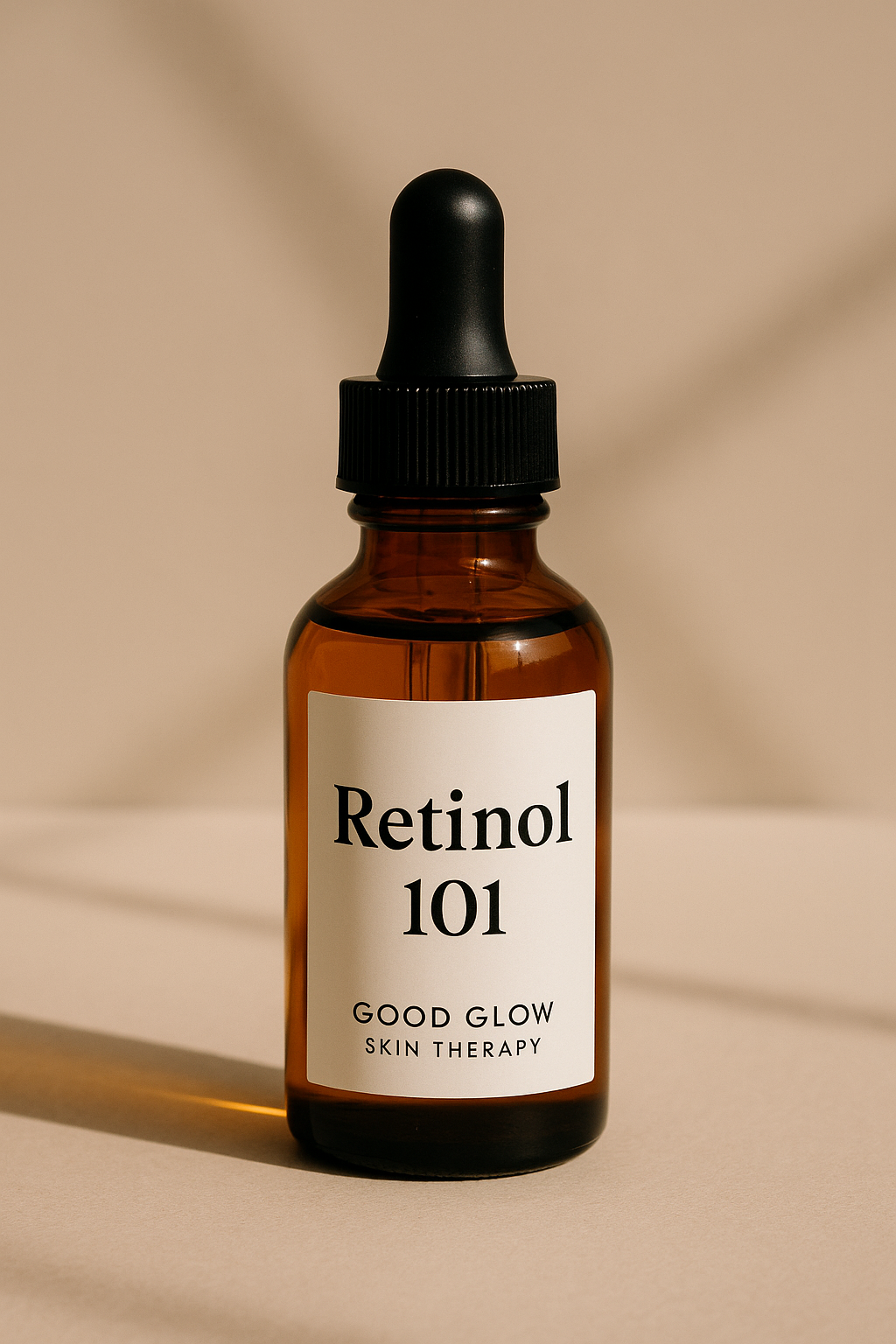Retinol 101 – The Vitamin A Breakdown Your Skin Has Been Waiting For
Retinol is one of the most talked-about skincare ingredients of all time — and for good reason. Known for its ability to transform texture, boost glow, treat acne, and soften fine lines, this Vitamin A powerhouse works deeper in the skin than most actives. But with all the hype also comes confusion: Which retinoid should you use? Why do some formulas burn? And is prescription strength actually better?
Let’s Glow Talk about it.
What Is Retinol?
Retinol is a derivative of Vitamin A, a nutrient essential for healthy skin cell turnover. When applied topically, retinol speeds up how fast your skin sheds old cells and brings fresh new ones to the surface — creating smoother, brighter, more even-looking skin.
But retinol isn’t just one ingredient — it belongs to a whole family of Vitamin A derivatives called retinoids.
The Retinoid Family (From Gentle to Strong)
Here’s how the different forms break down:
1. Retinyl Esters (Retinyl Palmitate, Retinyl Propionate)
Most gentle form
Converts twice before becoming active in the skin
Great for beginners or very sensitive skin
2. Retinol
The most common OTC form
Converts once to become active
Effective but still tolerable when introduced correctly
3. Retinaldehyde (Retinal)
Stronger than retinol
Faster conversion = more results
Good for those who already have retinol experience
4. Adapalene (Differin)
A synthetic retinoid
FDA-approved for acne
More stable + less irritating for some
5. Tretinoin (Rx)
Prescription strength
Works directly on the skin without needing conversion
Potent, effective… and can be very irritating
When Should You Use Prescription Strength?
RX retinoids like tretinoin have their place — but they aren’t for everyone.
Good Candidates for RX:
Stubborn acne that isn’t responding to OTC products
Deep wrinkles or advanced photoaging
Resistant melasma with dermatologist guidance
Thickened, sun-damaged skin
Not Ideal For:
Sensitive or reactive skin
Rosacea or eczema-prone skin
First-time retinol users
Anyone not already consistent with sunscreen
RX retinoids work fast but can cause dryness, peeling, redness, and increased sensitivity when they’re used incorrectly or too aggressively.
How to Use Retinol Safely (and Actually Enjoy the Glow)
Start Low & Slow
Use 1–2 nights per week, then gradually build.
Apply on Dry Skin
Retinol absorbs deeper on damp skin — which can equal irritation.
Moisturize Generously
Think barrier support: ceramides, squalane, glycerin.
You can even use the sandwich method: moisturizer → retinol → moisturizer.
Avoid These Pairings (When You’re New):
AHAs/BHAs
Benzoyl peroxide
Harsh scrubs
Overdoing actives in general
Use SPF Daily — Non-Negotiable
Retinol makes your skin more sensitive to the sun.
Skipping SPF = undoing your own progress.
Retinol’s Superpowers (Why It’s So Loved)
Retinol isn’t magic… but it’s close:
Speeds up cell turnover
Boosts collagen
Brightens tone
Softens texture
Minimizes fine lines
Helps unclog pores
Helps fade pigmentation over time
Few ingredients cover this many skin concerns in one bottle.
The Glow Takeaway
Retinol is one of the most transformative ingredients you can add to your routine — when used correctly. Whether you start with a gentle OTC formula or work up to something stronger, the key is patience, consistency, and barrier support.
Healthy skin shouldn’t feel raw, red, or overwhelmed. With the right approach, retinol becomes a glow-giving, skin-renewing, confidence-building ingredient you can rely on for years to come.
Stay glowing,
Diana
Founder, Good Glow Skin Therapy

